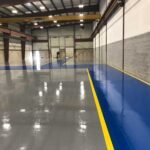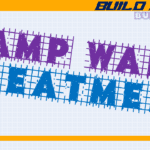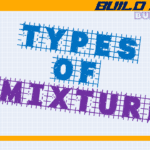In the construction industry, managing vast amounts of information, documents, and workflows efficiently is crucial. Aconex, a leading construction management software, has become an essential tool for many professionals. It provides a cloud-based platform that simplifies project management, enhances communication, and improves document control. My experience with Aconex has shown that it is designed to handle the complexity of large-scale construction projects, offering features that streamline processes and increase overall efficiency.

Key Features of Aconex
1. Project Management Tools
Aconex offers robust project management tools that allow teams to plan, execute, and monitor their projects effectively. The software provides features such as task management, scheduling, and progress tracking, which help in maintaining project timelines. The interface is intuitive, making it easy to assign tasks, set deadlines, and track the completion of project milestones. These tools are essential for keeping the project on schedule and ensuring that everyone is aware of their responsibilities.
2. Document Management
One of Aconex’s standout features is its comprehensive document management system. It allows users to store, manage, and share all project-related documents in a centralized location. The platform supports version control, ensuring that everyone works from the most up-to-date documents. You can also set permissions to control who has access to specific documents, which enhances security and confidentiality. The search functionality is powerful, allowing you to quickly locate any document you need.
3. Field Data Collection
Aconex excels in field data collection by providing mobile access to the platform. Field teams can collect and enter data on the go, ensuring that information is captured in real-time. This feature is particularly useful for inspections, punch lists, and daily reports. The data collected is immediately available to the rest of the team, which helps in making informed decisions quickly.
4. Drawing Management
Managing and sharing drawings is a critical aspect of any construction project. Aconex simplifies this process by offering a robust drawing management system. It allows you to upload, share, and annotate drawings, ensuring that everyone has access to the latest plans. The platform also supports markup tools, which enable team members to provide feedback and suggest changes directly on the drawings.
Benefits of Using Aconex
1. Enhanced Collaboration and Communication
Aconex significantly improves collaboration and communication among project stakeholders. The platform’s real-time updates, notifications, and communication tools ensure that everyone stays informed. By centralizing all communication within the platform, Aconex reduces the risk of miscommunication and ensures that all team members have access to the same information.
2. Real-time Access to Plans and Data
The cloud-based nature of Aconex allows for real-time access to all project plans and data, whether you are in the office or on-site. This ensures that decisions are based on the most current information, reducing the chances of errors and rework. Real-time data access is critical for keeping the project on track and avoiding costly delays.
3. Improved Efficiency and Accuracy
Using Aconex has greatly improved the efficiency and accuracy of my construction projects. The platform’s automation features, such as automatic notifications and reminders, reduce manual work and minimize the likelihood of human error. This not only saves time but also ensures that tasks are completed accurately and on schedule.
User Experience with Aconex
1. Interface and Usability
Aconex offers a user-friendly interface that is both intuitive and easy to navigate. The platform is designed to accommodate users with varying levels of technical expertise, making it accessible to all members of the project team. Customizable dashboards allow users to tailor the interface to their specific needs, which enhances the overall user experience.
2. Mobile Accessibility
In the construction industry, being able to access project information while on the move is crucial. Aconex’s mobile app provides full functionality, allowing you to manage tasks, update project status, and communicate with your team from your smartphone or tablet. This mobile accessibility ensures that you stay connected to your project at all times, no matter where you are.
Integrations with Other Construction Tools
1. Integration Capabilities
Aconex offers extensive integration capabilities, making it easy to connect with other software commonly used in construction management. Whether you need to integrate with BIM tools, ERP systems, or other project management software, Aconex provides seamless integration options. These integrations ensure that your workflows are not disrupted and that data flows smoothly between different platforms.
2. Customization Options
Aconex allows for a high degree of customization, enabling you to tailor the platform to your specific project needs. You can create custom workflows, templates, and reports, ensuring that the software adapts to your processes rather than the other way around. This flexibility is particularly beneficial for large, complex projects that require specialized management approaches.
Aconex vs. Other Construction Management Software
1. Comparisons with Competitors
When compared to other construction management software, Aconex stands out for its comprehensive document management capabilities and its focus on large-scale projects. While other tools like Procore and Buildertrend offer strong project management features, Aconex’s strength lies in its ability to handle the complexity of massive infrastructure projects. Its robust communication tools and real-time data access further set it apart from competitors.
2. Unique Selling Points of Aconex
Aconex’s unique selling points include its cloud-based document management system, real-time collaboration features, and extensive integration options. Unlike some competitors, Aconex is designed to manage the vast amounts of information associated with large projects, making it an ideal choice for complex construction initiatives. Its ability to integrate with other tools and its high level of customization further enhance its value to construction professionals.
Pricing and Licensing Options
1. Subscription Models
Aconex offers several subscription models to suit different business needs. The pricing structure is typically based on the size and complexity of the project, with options ranging from small-scale projects to enterprise-level deployments. Each subscription model provides access to the platform’s core features, with additional options available for more advanced functionalities.
2. Customizable Pricing Plans
For larger organizations or more complex projects, Aconex offers customizable pricing plans. These plans can be tailored to include specific features, user licenses, and storage options, ensuring that you get the most value from the platform. Customizable pricing allows you to scale the software according to your project’s needs, making it a cost-effective solution for construction management.
Common Challenges with Aconex
1. Learning Curve
One of the common challenges with Aconex is its learning curve. While the platform is user-friendly, its extensive feature set can be overwhelming for new users. However, Aconex offers a wealth of training resources, including webinars, tutorials, and a comprehensive help center, to help users get up to speed quickly.
2. Integration Issues
Although Aconex integrates with many tools, there can be challenges when connecting it with less common or highly specialized software. Users might need to rely on third-party applications or custom-built integrations to achieve seamless connectivity. Despite this, Aconex’s robust integration capabilities generally meet the needs of most construction professionals.
3. Customization Needs
Another challenge is the need for customization. While Aconex offers a high level of flexibility, setting up custom templates, workflows, and reports can be time-consuming. However, once these customizations are in place, they significantly enhance the platform’s usability and effectiveness for construction management.
Conclusion
Aconex has established itself as a powerful tool in the construction management industry. Its comprehensive document management capabilities, real-time collaboration features, and extensive customization options make it a top choice for large-scale construction projects. While there are some challenges, such as the learning curve and customization needs, the benefits of using Aconex far outweigh these drawbacks. For construction professionals managing complex projects, Aconex offers the tools and features needed to keep everything on track, on time, and within budget.
FAQs about Aconex
1. What is Aconex?
Aconex is a cloud-based construction management platform designed to streamline project management, document control, and collaboration.
2. How does Aconex improve project management?
Aconex improves project management by offering tools for task management, scheduling, and real-time communication, ensuring that projects stay on track.
3. What are the key features of Aconex?
Key features of Aconex include project management tools, document management, field data collection, and drawing management.
4. How does Aconex handle document management?
Aconex offers a centralized document management system that supports version control, secure access, and easy sharing of project documents.
5. What are the pricing options for Aconex?
Aconex offers several subscription models, with pricing typically based on the size and complexity of the project. Customizable pricing plans are also available.
6. Can Aconex integrate with other software?
Yes, Aconex integrates with a wide range of software commonly used in construction management, including BIM tools and ERP systems.
7. What are common challenges with using Aconex?
Common challenges include the learning curve for new users, integration issues with specialized software, and the time required for customization.
Disclaimer: The information provided in this article is based on personal experience and industry knowledge. It is intended for informational purposes only and does not constitute professional advice.








Leave a Reply